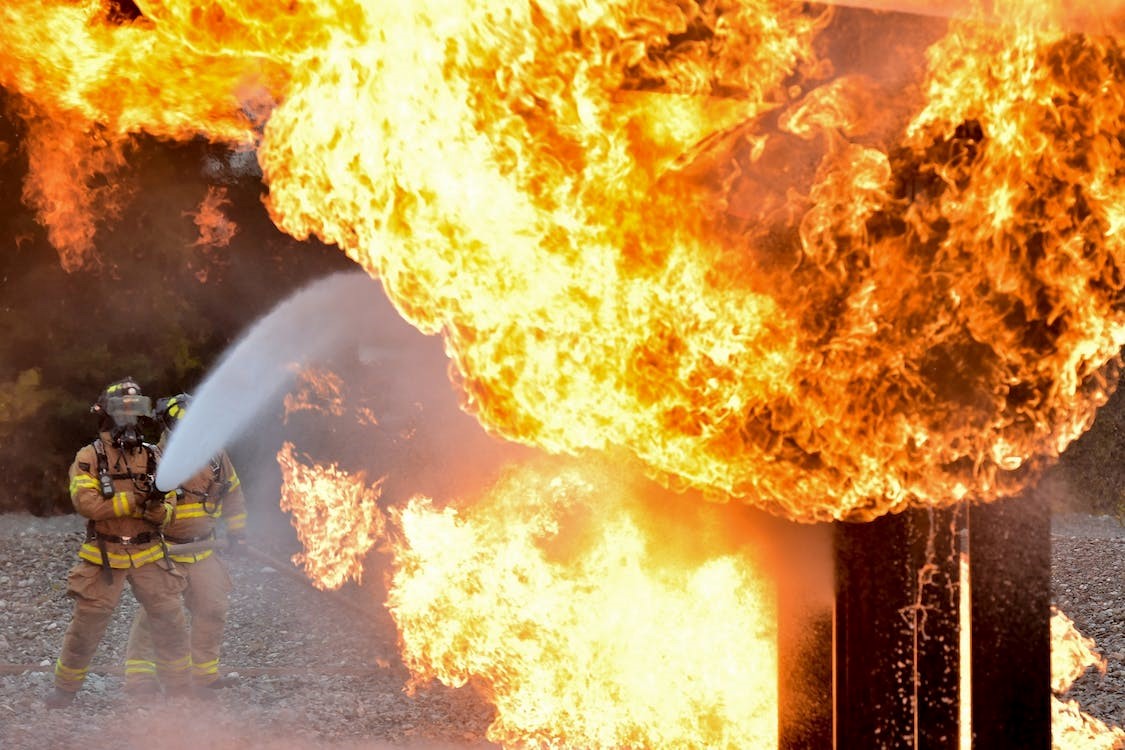How Modern Fire Detection Systems Are Saving Lives Daily
Fire hazards are as old as time, but the methods we use to detect and counteract them have seen a whirlwind of advancements in recent years. With increasingly sophisticated technologies emerging, it’s a golden era for fire safety in the UK. But just how are these modern fire detection systems outsmarting the flames and safeguarding our homes and businesses? Read on to find out more.

The Evolution of Detection
Long gone are the days when smoke detection was simply about a loud beeping sound that sometimes, embarrassingly, went off because of a slightly overcooked piece of toast. Today’s systems, such as those offered by Lucid Fire & Security Ltd, are astute, rapid, and incredibly discerning. They use:
- Smart sensors: Modern detectors use a combination of photoelectric and ionisation technologies. They’re not just identifying smoke; they’re differentiating between types of fires, ensuring more accurate alarms and fewer false triggers.
- Wireless integration: With the rise of smart homes in the UK, many fire detection systems can now be integrated wirelessly with other devices. This means immediate alerts on your smartphone or automatic calls to emergency services when something’s amiss.
Remote Monitoring: The Silent Guardian
For businesses, especially those with multiple locations, remote monitoring has been nothing short of revolutionary.
- Centralised control: A single dashboard can monitor a multitude of alarms across various sites, ensuring quick action regardless of where a fire breaks out.
- Real-time alerts: If a detector picks up an anomaly, it’s not just an in-site alarm that goes off. Instant notifications via emails, texts, or even phone calls can be set up, making sure that relevant personnel are in the loop immediately.
Environmental Considerations
Today’s fire detection systems are also playing their part in environmental conservation.
- Reduced false alarms: As mentioned, sophisticated sensors mean fewer false alarms. This not only avoids unnecessary panic but also means less wasted water and resources when fire brigades are erroneously called out.
- Energy efficiency: Modern detectors often come with energy-saving features, ensuring they operate optimally without drawing excessive power.
User-Friendliness: Empowering the Individual
A key aspect of why modern systems are so effective is their user-friendly nature.
- Easy installations: Most of today’s systems can be installed with minimal fuss, often without the need for professional help.
- Intuitive interfaces: Clear displays, simple settings, and easy-to-understand alerts mean users are more likely to engage with and correctly use their fire detection systems.
Enhanced Data Collection
In the age of information, fire detection systems are no exception to the trend of collecting and utilising data.
- Analytical insights: Systems today can analyse patterns, from the most common times for alarms to go off to which rooms are most vulnerable. This data is invaluable for both homes and businesses looking to enhance their fire safety measures.
- Predictive maintenance: Using data, these systems can also predict when they might malfunction or need a battery change, reducing the chances of them being non-functional in a crucial moment.
The Integration of Artificial Intelligence
One of the most groundbreaking integrations in the realm of fire detection is artificial intelligence (AI). Its role in revolutionising how systems operate and ensure safety is undeniably vast.
- Learning behaviours: AI-equipped fire detectors can learn from the environment, understanding the difference between a risky anomaly and, say, steam from a shower. Over time, they adapt, minimising the risk of unnecessary alarms.
- Intelligence response systems: Upon detection, AI can determine the most appropriate action, whether it’s activating sprinklers, notifying key personnel, or directly alerting emergency services.
The Role of Mobile Apps
Our smartphones have become an extension of our lives, and fire safety is seamlessly merging into this digital age.
- Instant connectivity: Mobile applications allow users to connect to their fire detection systems from anywhere in the world. Whether you’re on holiday or just down the street, you can monitor your premises.
- User customisations: Many apps now allow users to customise settings, check battery levels, and even conduct routine tests to ensure the system is operational.
Enhanced Safety Protocols in Public Spaces
While home safety is paramount, it’s crucial to consider the leaps taken in public domains like shopping centres, theatres, and stadiums.
- Zonal detection: Modern systems can pinpoint exactly where a fire has erupted, allowing for immediate, targeted action. This is particularly beneficial in expansive spaces where pinpointing the source can save precious minutes.
- Mass notification systems: Beyond just ringing alarms, public spaces are now equipped to provide vocal instructions, guiding individuals safely away from hazards and towards exits.
Interconnected Home Safety Systems
The synergy between different home safety devices has dramatically amplified the efficiency of modern setups.
- Smoke and carbon monoxide: Many fire detectors now also double as carbon monoxide alarms, ensuring a holistic approach to safety.
- Integration with home security: Fire detection systems often integrate seamlessly with home security systems, ensuring that while you’re protected from potential intruders, you’re also safeguarded from fire hazards.
Empowering Communities
The impact of modern fire detection systems isn’t limited to individual homes or businesses; it has a broader, community-centric influence.
- Community alert systems: Some advanced systems can notify not just the affected premises but also neighbouring homes or businesses, ensuring everyone’s safety in densely populated areas.
- Educational outreach: Manufacturers and safety bodies are conducting more community outreach, educating people about the advancements and how to maximise their benefits.
Challenges and the Road Ahead
No technological advance comes without its challenges, and fire detection systems are no exception.
- Over-dependency: While technology offers us enhanced safety, it’s essential for individuals not to become overly reliant. Regular drills, understanding evacuation procedures, and basic fire safety practices remain crucial.
- Future innovations: The horizon looks promising with the potential integration of augmented reality for evacuation procedures, even more advanced AI capabilities, and the possibility of utilising drones for immediate response in inaccessible areas.
The fire safety and detection landscape has undergone profound transformation, and the future looks bright. As technology continues to evolve, so does our ability to predict, detect, and react to fires with precision. However, it’s crucial to find the right balance between making the most of these advancements and remembering the basic tenets of fire safety.

